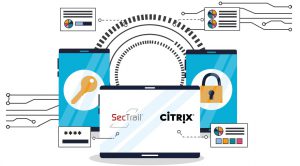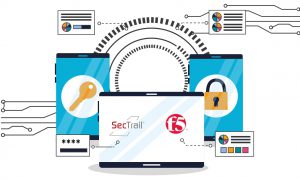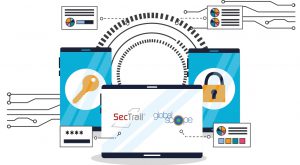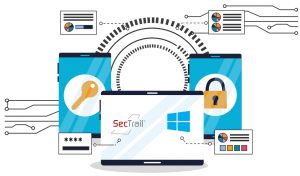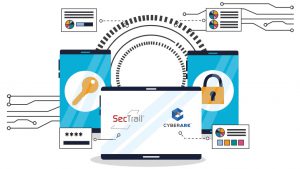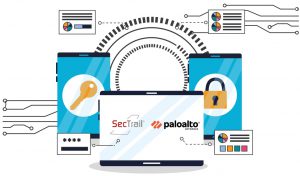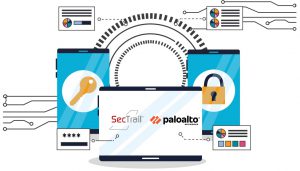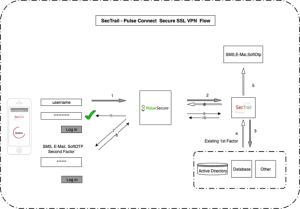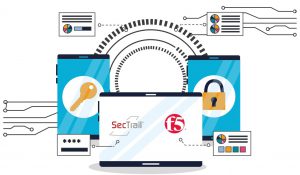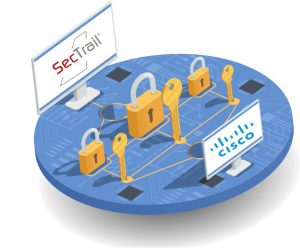Push Notification for Authentication
Despite organizations considering all possible alternatives and taking precautions to ensure secure access to systems and applications, the human factor that uses these systems is still the weakest link in security.
The "123456" password, still used by 1.5 million people for system logins in Turkey, is the clearest example of this. Although we think we make our job easier by using easy-to-remember passwords, we actually make it easier for hackers who can crack the password in less than a second. Click here for the list of most stolen passwords.

"To overcome the human factor when accessing company applications, a username and password may not be sufficient. As a security layer, using multi-factor authentication solutions, which is recognized by companies with this awareness, is one of the precautions taken."
There are various authentication methods that you can use and choose from with multi-factor authentication: SMS, email, hard tokens, or instant dynamic passwords generated in mobile applications to provide secure access for your users. Among these methods, the most preferred method both in terms of security and user convenience is the Identity Verification Notification (Push Notification).
Currently, among push notification authentication users, 51% are iOS users worldwide and 81% are Android users. If you would like to take a look at the statistics, you can benefit from the link.
What is Identity Verification Notification (Push Notification)?
So, what does push notification mean for access security? After username and password authentication, installing an authenticator application on mobile devices is the second authentication method that can be used to approve or reject access to provide more secure access to systems.
Why is Push Notification Preferred?
We have listed the most important reasons why push notification is preferred below.
-
Security
Unlike one-time SMS passwords that contain codes that can be seen on a locked phone screen, push notifications do not work without unlocking the device. Even if a user's smartphone falls into the wrong hands, the device's PIN code, FaceID, or TouchID provides protection against unauthorized access.
-
User Convenience
It is fast and easy to use; all users need to do is to approve the notification with a single tap to instantly gain access. There is no need to type, copy, or remember anything.
-
Low Cost and Easy Management
Push Notification (authentication notification) allows users to benefit from their existing smartphones, making it a lower cost choice for security without the need for any hardware that needs to be managed. Management ease is another advantage. Users can download and install the application on their smartphones without IT assistance, and the application is automatically updated.
What are the Benefits of Push Notification for Authentication Compared to Other Methods?
Authentication via SMS
This is one of the most commonly used forms of authentication today. This method sends a login code to the user's phone or email after they have submitted their credentials. Once they receive the code, they must enter it correctly to complete the login.
SMS-based authentication provides effective security against automatic and bulk phishing attacks, but is less effective for accounts specifically targeted in attacks. This vulnerability arises from the need for a third-party network to act as an intermediary between the source of the code and the end user.
Push notification, on the other hand, is created directly on the user's smartphone with a verification app and does not require the user to enter a numeric code. This not only provides a simpler user experience but also saves time for employees.
Time-based One-Time Password (TOTP)
A dynamically generated code similar to SMS-based authentication is used. However, unlike SMS, TOTP codes are generated through a authentication app via instant push notifications. The numerical codes are valid for a specific time interval, usually around 30 seconds, and the user must enter the TOTP correctly before the time expires.
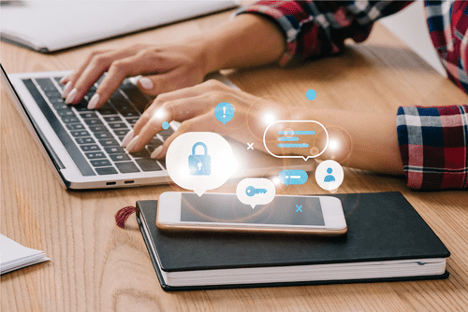
TOTP is generally considered more secure than SMS. While some users may find entering the code within the time limit a cumbersome process, TOTP is a preferred method. IT administrators find TOTP relatively easy to manage. Push Notification works similarly to TOTP and provides the same level of security with a better user experience.
In terms of its impact on users, Dell Technologies' 'Brain on Tech' report notes that when users around the world are given a long and difficult password with time constraints to access their computers, their stress levels increase by 31% within five seconds, and continue to increase even after successfully logging in.
Do You Need More Than Just a Password for Security?
Authentication Notification; eliminates bad password habits such as typing passwords, repeating passwords, or avoiding simple or common passwords to prevent passwords from being visible, accessible or intercepted by others. Another benefit of getting rid of passwords is that it eliminates support teams dealing with password reset requests due to forgotten passwords. Getting rid of passwords also brings time and cost savings.
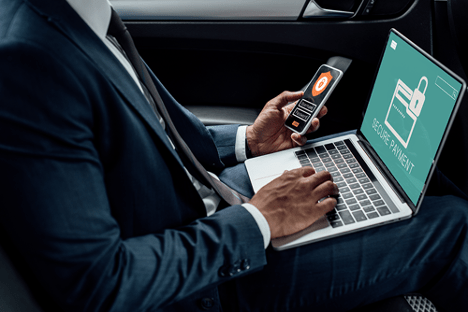
The increasing use of 'Push Notification' and its potential to become a more preferred method in the future is expected to gain momentum with sectoral regulatory regulations. Considering both security and user convenience as well as operational costs, it takes an important security burden off the shoulders of companies. For more information about the Identity Verification Notification (Push Notification) feature provided by SecTrail MFA, please contact us.
